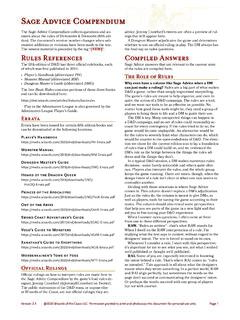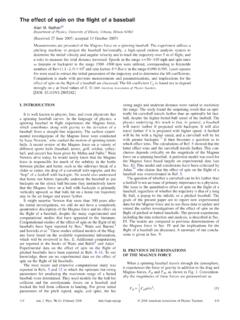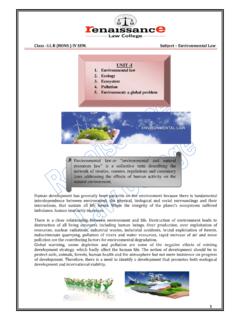Transcription of List of GHS Hazard and Precautionary Statements
1 List of GHS Hazard and Precautionary Statements Hazard Statements (H-codes). Physical hazards H200: Unstable explosive H201: Explosive; mass explosion Hazard H202: Explosive; severe projection Hazard H203: Explosive; fire, blast or projection Hazard H204: Fire or projection Hazard H205: May mass explode in fire H220: Extremely flammable gas H221: Flammable gas H222: Extremely flammable aerosol H223: Flammable aerosol H224: Extremely flammable liquid and vapour H225: Highly flammable liquid and vapour H226: Flammable liquid and vapour H227: Combustible liquid H228: Flammable solid H229: Pressurized container: may burst if heated H230: May react explosively even in the absence of air H231: May react explosively even in the absence of air at elevated pressure and/or temperature H240: Heating may cause an explosion H241: Heating may cause a fire or explosion H242: Heating may cause a fire H250.
2 Catches fire spontaneously if exposed to air H251: Self-heating; may catch fire H252: Self-heating in large quantities; may catch fire H260: In contact with water releases flammable gases which may ignite spontaneously H261: In contact with water releases flammable gas H270: May cause or intensify fire; oxidizer H271: May cause fire or explosion; strong oxidizer H272: May intensify fire; oxidizer H280: Contains gas under pressure; may explode if heated H281: Contains refrigerated gas; may cause cryogenic burns or injury H290: May be corrosive to metals Health hazards H300: Fatal if swallowed H301: Toxic if swallowed H302: Harmful if swallowed H303: May be harmful if swallowed H304: May be fatal if swallowed and enters airways H305: May be harmful if swallowed and enters airways H310: Fatal in contact with skin List of GHS Hazard and Precautionary Statements H311: Toxic in contact with skin H312: Harmful in contact with skin H313: May be harmful in contact with skin H314: Causes severe skin burns and eye damage H315: Causes skin irritation H316: Causes mild skin irritation H317: May cause an allergic skin reaction H318: Causes serious eye damage H319: Causes serious eye irritation H320.
3 Causes eye irritation H330: Fatal if inhaled H331: Toxic if inhaled H332: Harmful if inhaled H333: May be harmful if inhaled H334: May cause allergy or asthma symptoms or breathing difficulties if inhaled H335: May cause respiratory irritation H336: May cause drowsiness or dizziness H340: May cause genetic defects H341: Suspected of causing genetic defects H350: May cause cancer H351: Suspected of causing cancer H360: May damage fertility or the unborn child H361: Suspected of damaging fertility or the unborn child H361d: Suspected of damaging the unborn child H361f: Suspected of damaging fertility H362: May cause harm to breast-fed children H370: Causes damage to organs H371: May cause damage to organs H372: Causes damage to organs through prolonged or repeated exposure H373: May cause damage to organs through prolonged or repeated exposure H300+H310: Fatal if swallowed or in contact with skin H300+H330: Fatal if swallowed or if inhaled H310+H330: Fatal in contact with skin or if inhaled H300+H310+H330: Fatal if swallowed, in contact with skin or if inhaled H301+H311: Toxic if swallowed or in contact with skin H301+H331: Toxic if swallowed or if inhaled H311+H331: Toxic in contact with skin or if inhaled H301+H311+H331: Toxic if swallowed, in contact with skin or if inhaled H302+H312: Harmful if swallowed or in contact with skin H302+H332: Harmful if swallowed or if inhaled H312+H332.
4 Harmful in contact with skin or if inhaled H302+H312+H332: Harmful if swallowed, in contact with skin or if inhaled Environmental hazards H400: Very toxic to aquatic life H401: Toxic to aquatic life H402: Harmful to aquatic life List of GHS Hazard and Precautionary Statements H410: Very toxic to aquatic life with long-lasting effects H411: Toxic to aquatic life with long-lasting effects H412: Harmful to aquatic life with long-lasting effects H413: May cause long-lasting harmful effects to aquatic life H420: Harms public health and the environment by destroying ozone in the upper atmosphere Country-specific Hazard Statements European Union Physical properties EUH001: Explosive when dry EUH006: Explosive with or without contact with air, deleted in the fourth adaptation to technical progress of CLP.
5 EUH014: Reacts violently with water EUH018: In use may form flammable/explosive vapour-air mixture EUH019: May form explosive peroxides EUH044: Risk of explosion if heated under confinement Health properties EUH029: Contact with water liberates toxic gas EUH031: Contact with acids liberates toxic gas EUH032: Contact with acids liberates very toxic gas EUH066: Repeated exposure may cause skin dryness or cracking EUH070: Toxic by eye contact EUH071: Corrosive to the respiratory tract Environmental properties EUH059: Hazardous to the ozone layer, superseded by GHS Class in the second adaptation to technical progress of CLP. Other EU Hazard Statements EUH201: Contains lead. Should not be used on surfaces liable to be chewed or sucked by children.
6 EUH201A: Warning! Contains lead. EUH202: Cyanoacrylate. Danger. Bonds skin and eyes in seconds. Keep out of the reach of children. EUH203: Contains chromium(VI). May produce an allergic reaction. EUH204: Contains isocyanates. May produce an allergic reaction. EUH205: Contains epoxy constituents. May produce an allergic reaction. EUH206: Warning! Do not use together with other products. May release dangerous gases (chlorine). EUH207: Warning! Contains cadmium. Dangerous fumes are formed during use. See information supplied by the manufacturer. Comply with the safety instructions. EUH208: Contains <name of sensitising substance>. May produce an allergic reaction. EUH209: Can become highly flammable in use. EUH209A: Can become flammable in use.
7 EUH210: Safety data sheet available on request. EUH401: To avoid risks to human health and the environment, comply with the instructions for use. List of GHS Hazard and Precautionary Statements Precautionary Statements General Precautionary Statements P101: If medical advice is needed, have product container or label at hand. P102: Keep out of reach of children. P103: Read label before use. Prevention Precautionary Statements P201: Obtain special instructions before use. P202: Do not handle until all safety precautions have been read and understood. P210: Keep away from heat, hot surfaces, sparks, open flames and other ignition sources. No smoking. P211: Do not spray on an open flame or other ignition source. P220: Keep/Store away from clothing/ /combustible materials.
8 P221: Take any precaution to avoid mixing with combustibles. P222: Do not allow contact with air. P223: Do not allow contact with water. P230: Keep wetted with . P231: Handle under inert gas. P232: Protect from moisture. P233: Keep container tightly closed. P234: Keep only in original container. P235: Keep P240: Ground/bond container and receiving equipment. P241: Use explosion-proof electrical/ventilating/lighting/ /equipment. P242: Use only non-sparking tools. P243: Take Precautionary measures against static discharge. P244: Keep valves and fittings free from oil and grease. P250: Do not subject to grinding/shock/ /friction. P251: Do not pierce or burn, even after use. P260: Do not breathe dust/fumes/gas/mist/vapours/spray.
9 P261: Avoid breathing dust/fumes/gas/mist/vapours/spray P262: Do not get in eyes, on skin, or on clothing. P263: Avoid contact during pregnancy/while nursing. P264: Wash thoroughly after handling. P270: Do not eat, drink or smoke when using this product. P271: Use only outdoors or in a well-ventilated area. P272: Contaminated work clothing should not be allowed out of the workplace. P273: Avoid release to the environment. P280: Wear protective gloves/protective clothing/eye protection/face protection. P282: Wear cold insulating gloves/face shield/eye protection. P283: Wear fire/flame resistant/retardant clothing. P284: [In case of inadequate ventilation] wear respiratory protection P231+232: Handle under inert gas. Protect from moisture P235+410: Keep cool.
10 Protect from sunlight List of GHS Hazard and Precautionary Statements Response Precautionary Statements P301: IF SWALLOWED: P302: IF ON SKIN: P303: IF ON SKIN (or hair): P304: IF INHALED: P305: IF IN EYES: P306: IF ON CLOTHING: P307: [Deleted by IV ATP]. P308: If exposed or concerned: P309: [Deleted by IV ATP]. P310: Immediately call a POISON CENTER/doctor/ . P311: Call a POISON CENTER/ doctor/ . P312: Call a POISON CENTER/ doctor/ /if you feel unwell. P313: Get medical advice/attention. P314: Get medical advice/attention if you feel unwell. P315: Get immediate medical advice/attention. P320: Specific treatment is urgent (see on this label). P321: Specific treatment (see on this label). P330: Rinse mouth. P331: Do NOT induce vomiting.





